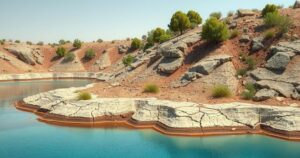Study Disproves Claims Linking Iranian Earthquake to Nuclear Test

New research confirms that the earthquake in Iran was not a nuclear test, challenging widespread misinformation. The study, led by Dr. Benjamin Fernando, utilized seismic data to demonstrate the quake’s natural origins, calling attention to the need for accurate scientific communication amidst geopolitical tensions.
Recent research has clarified that a 4.5-magnitude earthquake in Iran was not the result of a nuclear test, as previously speculated. The study, published in Seismica, refutes claims arising on social media and some news outlets during heightened regional tensions in October 2024. This underscores the risks associated with misinterpreting scientific data, particularly in politically sensitive contexts, according to the American-led research team.
Dr. Benjamin Fernando, a seismologist at Johns Hopkins University and lead author, stated that significant misinformation regarding the earthquake proliferated, suggesting a nuclear test—a notion rarely seen associated with seismic events. He pointed out that geophysical data is vital in understanding such occurrences, especially amid geopolitical crises.
The earthquake struck on October 5, 2024, near Semnan, a city in a seismically active area of northern Iran. The research team employed seismic signal analysis and publicly accessible monitoring data to trace the quake’s origins to a gently sloping fault affected by the collision of the Arabian and Eurasian tectonic plates.
Dr. Fernando emphasized that seismic waves provide vital insights into the earthquakes’ origins. He noted that the event was due to a reverse fault associated with tectonic pressure rather than an explosive signature typical of nuclear detonations. Historical seismic patterns validated their findings, showing that similar earthquakes occurred in 2015 and 2018, unrelated to nuclear activity.
Despite the scientific consensus on the quake’s natural origin, speculation of a nuclear test surged on social media within minutes of the event. Initial misinterpretations of seismic data quickly escalated misinformation, with the first allegations appearing just 27 minutes post-quake, fueling further conspiracy theories linking unrelated seismic events across the region.
The research highlighted that one prominent account disseminating the nuclear test theory had ties to known disinformation efforts backed by Russian sources. The narrative transitioned swiftly from social media into international reporting, with Indian media notably amplifying the claims, often drawing on erroneous data.
The authors of the study advocated for enhanced collaborations among seismologists to debunk misinformation promptly. Dr. Saman Karimi, co-author of the study, stressed the importance of scientific agencies releasing detailed findings swiftly. She proposed that verified scientific accounts should be prioritized to diminish misleading narratives spread on social media platforms.
The recent earthquake in Iran, occurring during a time of political tension, sparked immediate concerns that it might be connected to nuclear testing by the Iranian government. With misinformation quickly circulating through social media and reports from some news outlets, a need for thorough and timely research became evident. This situation illustrates the broader implications of scientific miscommunication in real-time geopolitical crises, emphasizing the importance of accurate data interpretation in countering unfounded claims.
The study clearly establishes that the 4.5-magnitude earthquake in Iran was a natural event, disproving claims of a nuclear test. The research emphasizes the significance of accurate scientific communication and the dangers of misinformation, especially during geopolitical strife. It also calls for better coordination among seismologists and scientific agencies to counter misleading narratives and ensure fact-based discourse in public and media platforms.
Original Source: www.newsbug.info






